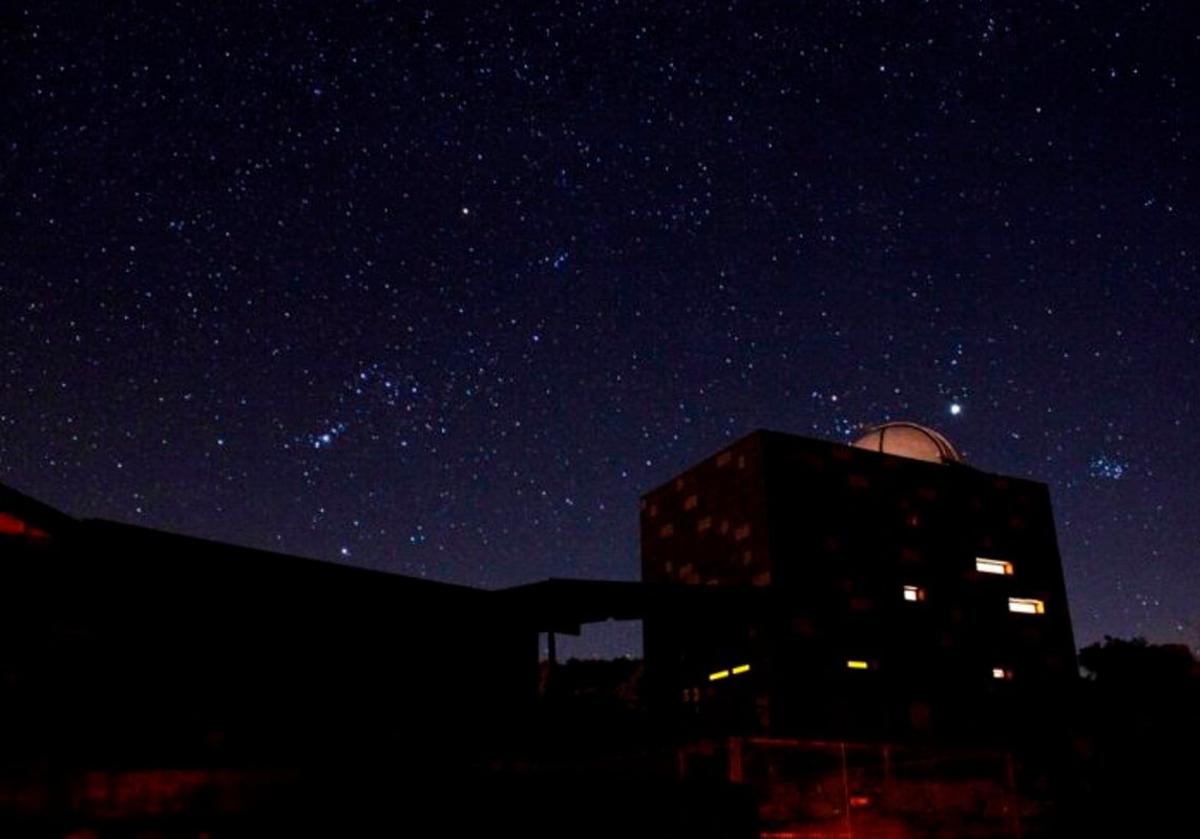Malaga under the stars: a celestial excursion in Antequera's El Torcal
The karst site offers night-time routes and astronomy sessions for 10 euros, with the Perseids meteor shower as the event of the summer
Alejandro Trujillo
Malaga
Friday, 25 July 2025, 10:41
The last glint of sunlight fades behind the limestone outcrops and suddenly silence takes on a sound of its own: the slight creaking of the rock, the murmur of the wind and a chorus of crickets that announces the arrival of the stars. At the top of the Torcal de Antequera, more than 1,200 metres above sea level, a group of hikers switch off their torches and look up to discover the Milky Way spilling over the horizon. It's not science fiction or a remote Chilean desert: in fact, it's Malaga by night. A site of geological heritage that becomes a celestial viewpoint every summer.
The Torcal Astronomical Observatory (OAT), owned by the Junta de Andalucía, is located next to the Torcal Alto visitor centre, within the first protected natural site declared in Andalucía (1929) and today part of the Antequera Dolmens Site, a Unesco World Heritage Site since 2016. Its mission is informative: it is open all year round with sessions for the general public, children and amateur stargazers, and in summer it multiplies its timetable with night-time observations combining the green and yellow routes before pointing the telescopes at Saturn, star clusters and the Milky Way.
Science made accessible
"The activity is called Una Ventana al Universo (A Window to the Universe) and costs ten euros; pensioners and children under 12 pay eight," explained Francisco Gálvez, coordinator of the Aula del Cielo (Sky Classroom) programme.
"These are very appealing activities: we offer science in an affordable way with high-level telescopes and many visitors come back." Gálvez said "we can't be charging 200 euros a night" and recalled that the usual groups are around 30 to 50 people, although the range can go from ten to 100 visitors depending on demand.
Regular sessions are held on Mondays, Wednesdays, Fridays and Saturdays, at 10pm, with prior booking on the official website. Most of the public comes from Malaga, "but people have also come from Copenhagen, South America or Melilla".
The format includes a walk with an explanation of the sky and observation with telescopes, turning beginners into enthusiasts: "People arrive without knowing anything and leave with a love of astronomy," said Gálvez.
The OAT is already preparing the Lágrimas de San Lorenzo (Tears of Saint Lawrence): the activity dedicated to the Perseids meteor shower. "It began in the last century and is the most traditional in the area," said the coordinator. The big days (11, 12 and 13 August) sell out in just a few hours, so every year extra places are made available before and after these dates to meet the growing demand.
Night tourism and institutional support
Under the label: Summer Nights in El Torcal, local companies offer packages that include a sunset walk and a picnic with Malaga products before the observation at midnight. The format attracts couples and families looking for sustainable tourism as opposed to the classic holidays of sun and sea.
Antequera town hall is reinforcing the proposal through the Luz de Luna cultural programme, which this year offers more than twenty night-time activities with a budget of 14,000 euros. The provincial council and Costa del Sol tourism board are earmarking funds to promote astro-tourism at trade fairs such as ITB Berlin. Likewise, The Junta has invested 300,000 euros in improving the A-7075 road, the main access to the site, after the damage caused by the torrential rains last autumn.
These actions are part of a strategy to boost inland tourism, which enabled Antequera to close 2024 with 287,864 hotel overnight stays, four per cent more than the previous year, with August as the month with the highest occupancy. In total, the city received more than 542,000 visits, of which 190,134 corresponded to the Torcal, consolidating its role as one of the most visited sites in the province.
In addition to tourism, the OAT offers introductory courses and school workshops. Its team, while waiting to finalise participation figures, highlights the educational value of watching the meteor shower scheduled for 11 to 13 August.
El Torcal is not only a geological laboratory: since 2016, together with the Peña de los Enamorados and the dolmens of Menga, Viera and El Romeral, it has formed part of a Unesco-protected site, where culture and nature go hand in hand. The same night sky that fascinated the first settlers in the province 4,000 years ago is now becoming an up-and-coming tourist spot. Malaga has found a sustainable and educational tourist attraction and is waiting for the site's consolidation as one of the best celestial viewpoints in southern Europe.

Comentar es una ventaja exclusiva para registrados
¿Ya eres registrado?
Inicia sesiónNecesitas ser suscriptor para poder responder.
Necesitas ser suscriptor para poder votar.